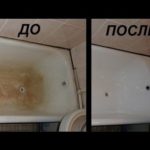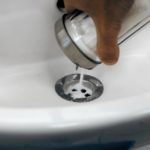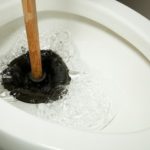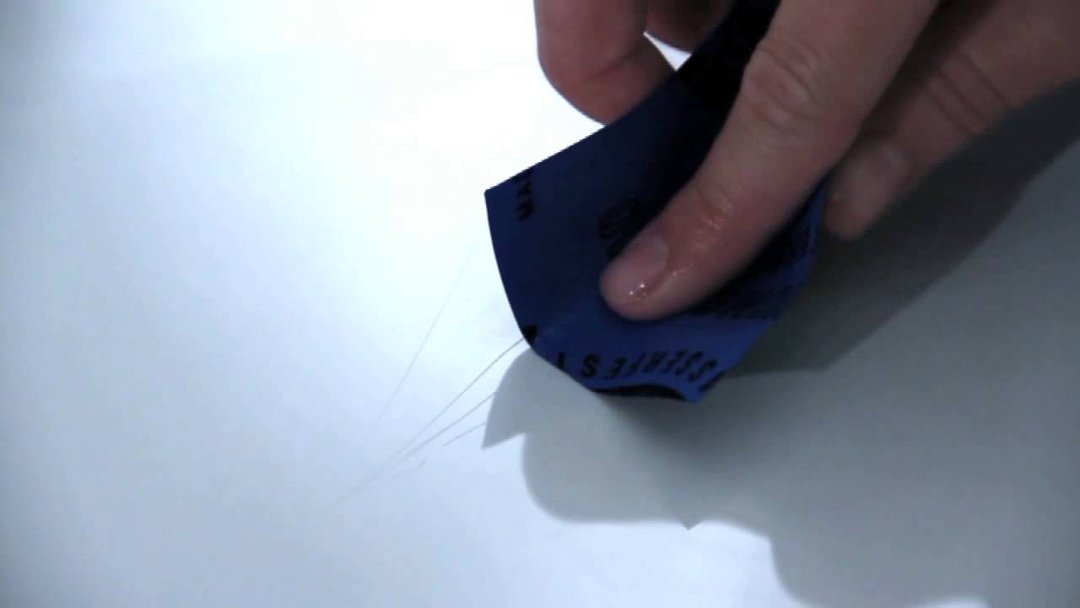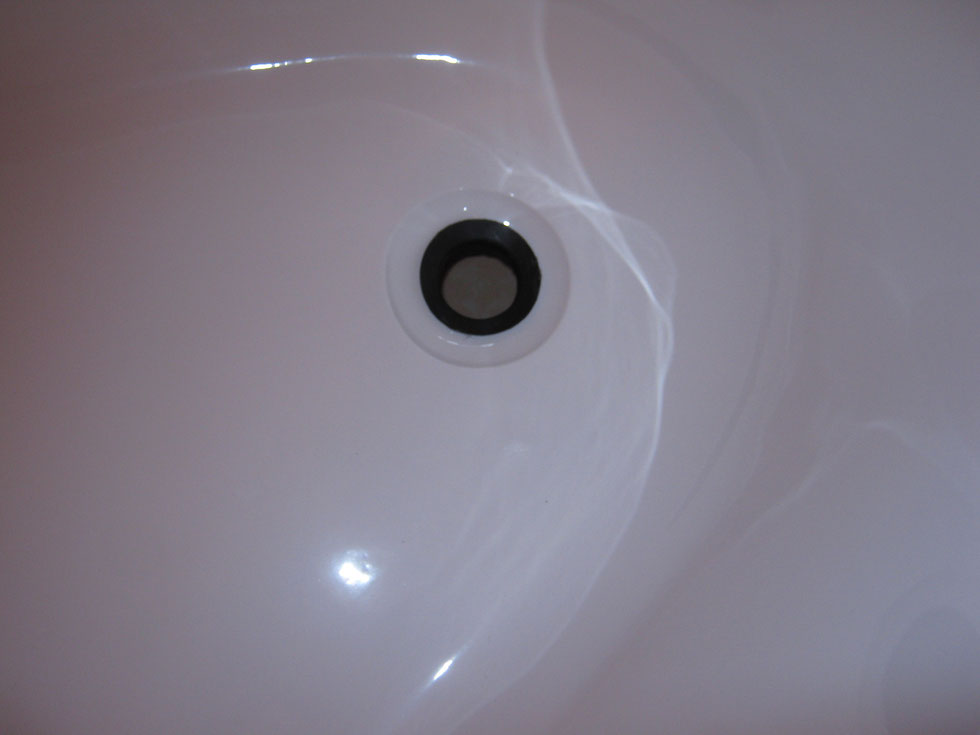How to clean a bathtub at home if it's clogged
If you have a bathtub at home, and many people do, then most likely you are already well aware of one of its “cute” habits. Bathtubs really like to get clogged. However, sinks are no less guilty of this. And, most importantly, at the most inconvenient moment. Why is this happening? How to get rid of a blockage? Let's try to figure it out.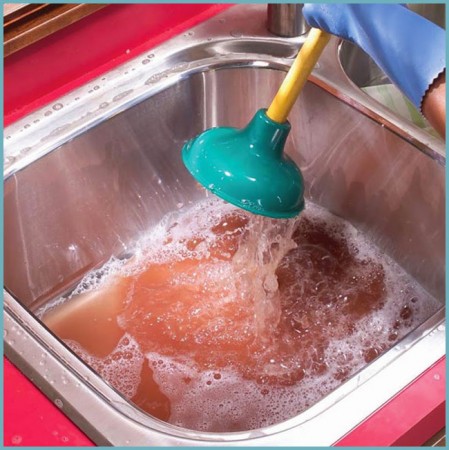
The content of the article
Why do clogs appear?
The causes of blockages can be very diverse. The most common and frequent:
- accumulation of various pellets, debris, wool and hair inside the siphon, as well as on the walls of the pipes, which occurs after draining the washing machine;
- ingress of waste along with water after washing floors;
- incorrect installation of the siphon, insufficient slope of the sewer pipes;
- old sewer system.
In addition, if hot water has not been drained into the bath for a long time, this contributes to the accumulation of fat, to which the rest of the dirt sticks - this is another reason for the obstruction of water in the sewer system.
How to clear the blockage yourself
Of all the possible technologies for removing clogs, three main methods can be distinguished:
- Mechanical method. If everything is bad in your bathtub and there is a real plug of debris and dirt inside the drain, then the best solution would be to put in a little effort and work with a plumbing cable.At the end of this cable there is a shank like a brush. It catches all the dirt, and thanks to its flexibility and length it can reach even the deepest places.
- Hydraulic method. Everyone is well aware of such a device as a plunger. Many people definitely have it somewhere in their bathroom. The plunger is a hydraulic means of removing blockages. With its help, you can create water pressure, which, with its pressure, destroys contaminants on the walls of the pipes. In addition, there are various hydraulic hoses with spray nozzles.
- Chemical method. Pollution can also be successfully combated with the help of chemical industry products. On store shelves you can find various reagents that break down the blockage into its components. You can also use household chemicals quite successfully. The chemicals remove the grease that holds the dirt together, and the residue can be removed with a plunger.
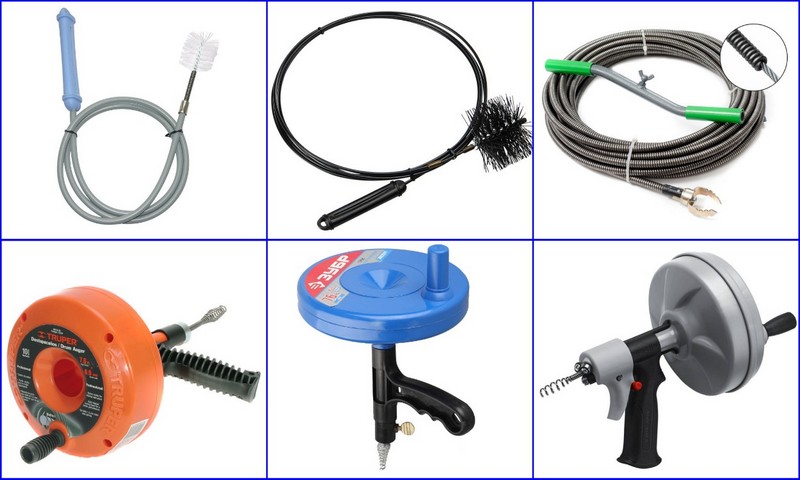
Plumbing cable
When choosing products that can clear clogs, we often opt for reliable and proven devices. A plumbing cable has the form of a spring, reaching a length of up to ten meters, its diameter can be six or nine millimeters. To make it more convenient to rotate the cable, there is a handle at the end.
For greater efficiency, the end of the cable is equipped with a nozzle. It allows you to catch debris. In order to use the cable, you need to remove the siphon and remove all accumulated dirt from it. The end of the cable with the nozzle is inserted into the sewer hole. By rotating the handle, the cable gradually advances. If you feel resistance, you need to make several forward and backward movements. This procedure is repeated several times until resistance is eliminated.Don't forget to rinse the cable in warm water.
Attention! Be careful when cleaning. Do not use much force to prevent the cable from damaging the pipes.
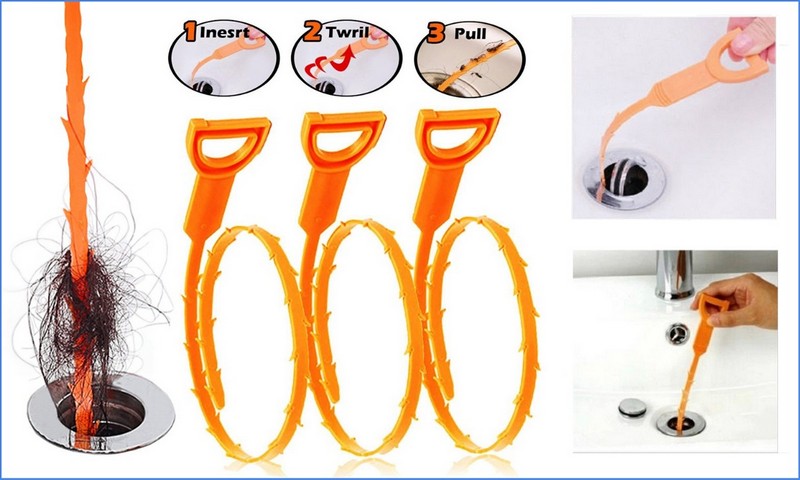
plunger
This is something that every self-respecting owner should have. This is one of the best and simplest means of dealing with blockages. It is effective, easily deals with dirt, and is inexpensive. Its action does not harm the sewer system.
It is made in the form of a rubber hemisphere, on the upper part of which a handle is installed. Using the handle, air is pumped in, which creates pressure to push through the blockage. In stores you can see a wide range of these products. The plunger is used in the following way:
- The plunger must be installed on the drain hole. Pump the handle several times. If the flow is slow, then the procedure is repeated.
- To enhance the effect, you can do the following. Close the drain with a plug. Fill the bath with hot water. Then remove the plug so that water fills the pipe.
- Then we reinstall the plunger and push through the blockage. In this case, it is better to close the overflow hole tightly.
- After this procedure, you need to check the operation of the drain. If the drainage is good, then turn on the hot water and flush the pipe. Otherwise, the entire procedure should be started over.
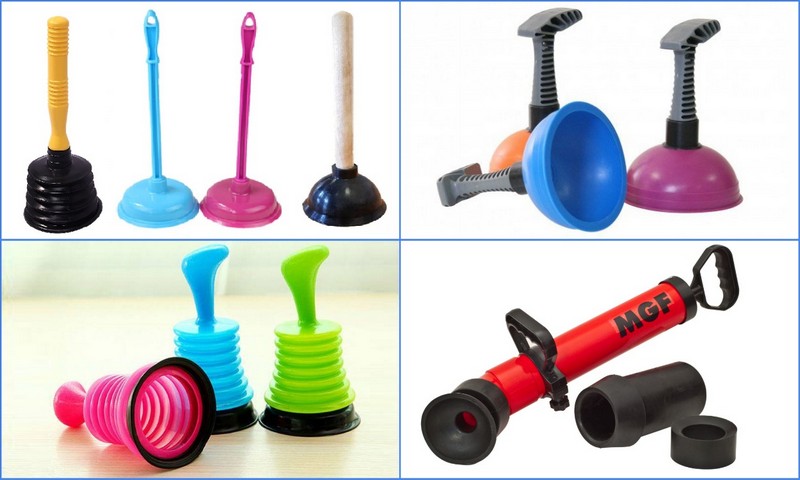
Siphon cleaning
Having a curved shape, siphons are most susceptible to clogging. When clearing a blockage, it is usually removed. The siphon itself is cleaned in this way:
- You need to put a rag or some kind of container under it. Unscrew the nuts that press the pipe and corrugation.
- Using a screwdriver, you need to unscrew the screw securing the drain grate. The flask is easily removed; you can also remove the corrugation that fits into the sewer.
- Dilute the detergent in hot water and place all the removed elements. They need to be thoroughly washed to remove accumulated dirt.
- After finishing washing, put everything back in the reverse order. Then you need to supply water and check the tightness. If there are no leaks, you can use it.
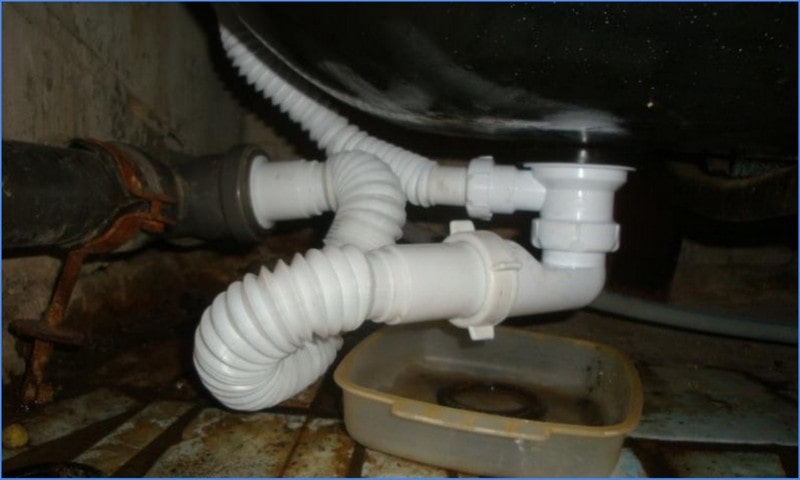
Chemical cleaning
Television and advertising did their job. Thanks to their efforts, chemical solutions for removing blockages have become very popular. Almost all manufacturers assure us that their products can do everything - get rid of lime deposits, dissolve paper, organic matter, fat deposits and everything else.
Despite this “omnivorous” nature, the reagents do not harm the pipes themselves. On store shelves you can see various gels, liquids, powders and granules.
The most popular means are:
- "Mole".
- Chirton.
- Bagi Pothan.
- Sanfor.
- Deboucher Aqualon.
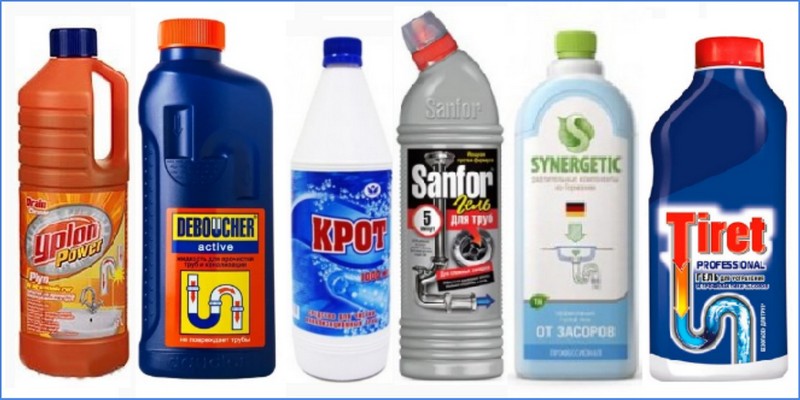
How to prevent blockages
The best way to combat pollution is to prevent it from happening. It is easier to prevent a blockage than to try to break through it later. Follow these guidelines:
- Install a protective grill over the drain hole. It will trap dirt and hair.
- Once or twice a year, preventive cleaning of pipes should be carried out using chemical reagents. This will prevent the accumulation of grease and limestone deposits on the pipe walls.
- You should try to flush the pipes with hot water more often.
- If you are draining hot water from a washing machine, do not be lazy to take a plunger and clean the pipes.
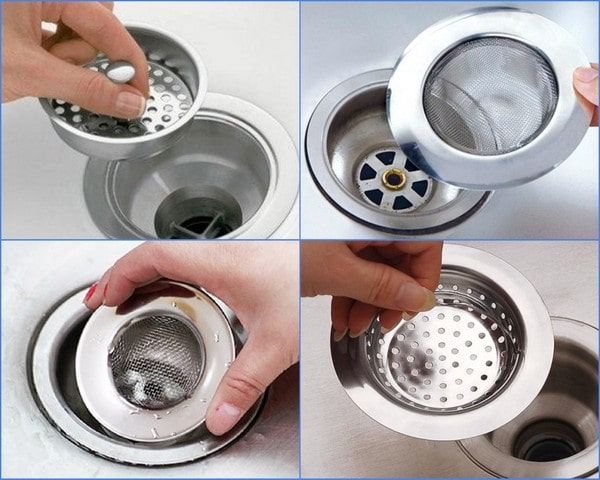
When removing blockages, use all methods in combination. Most of them are easy to use with a plunger.

